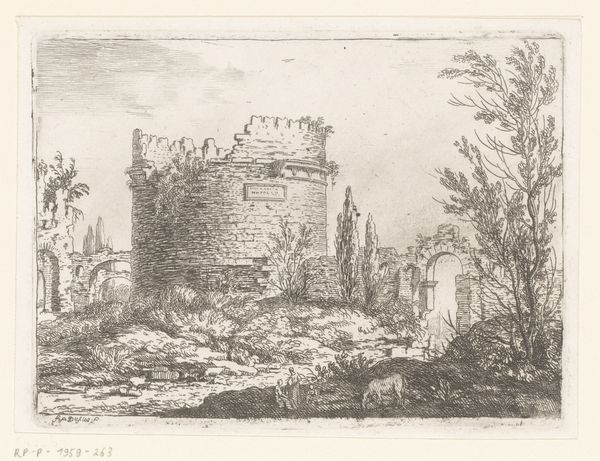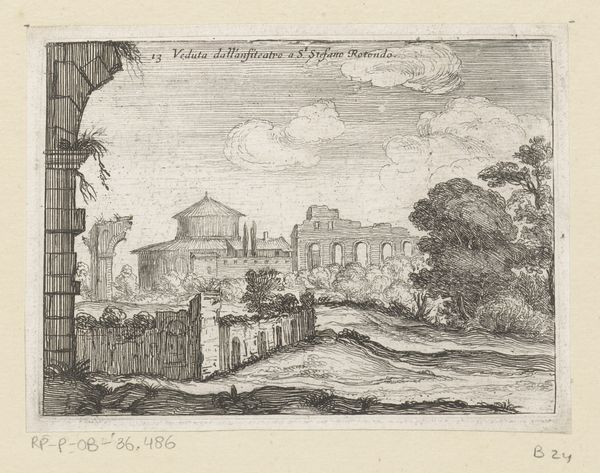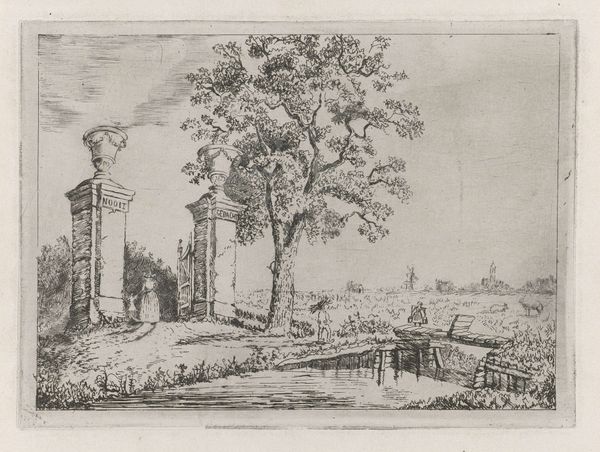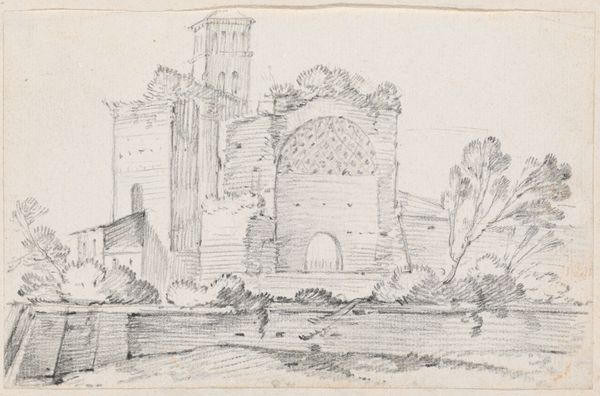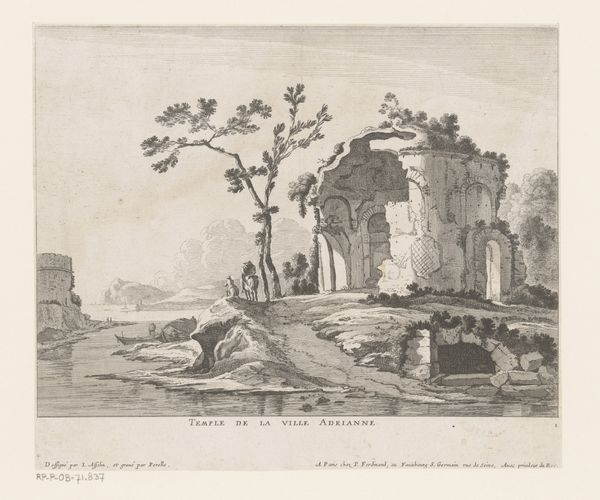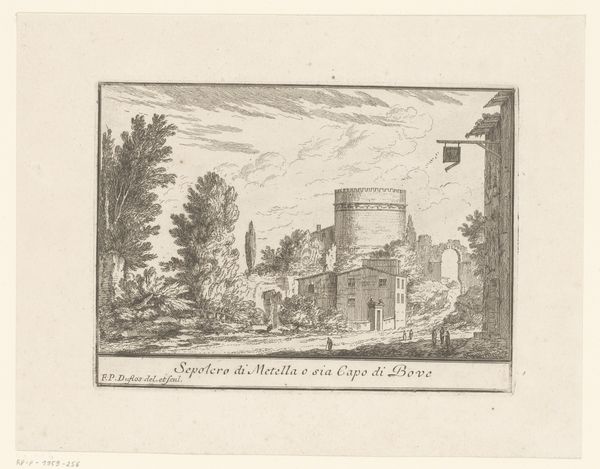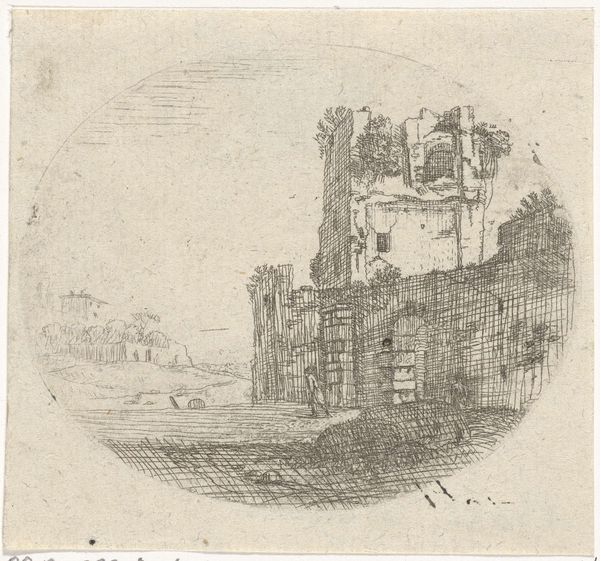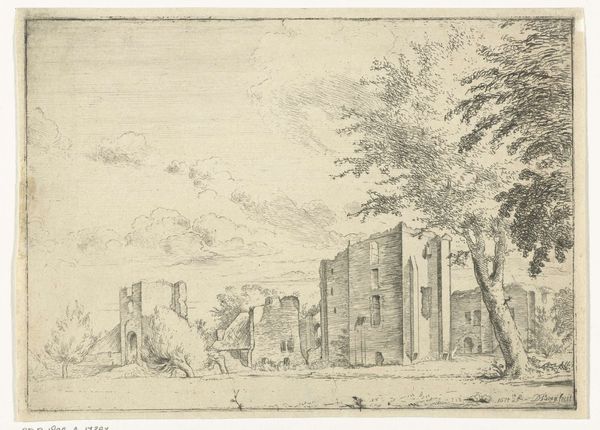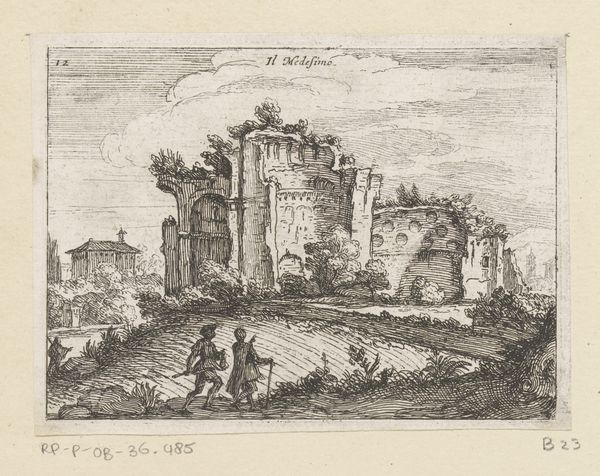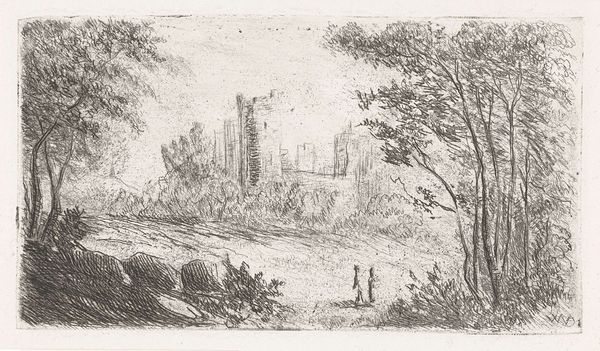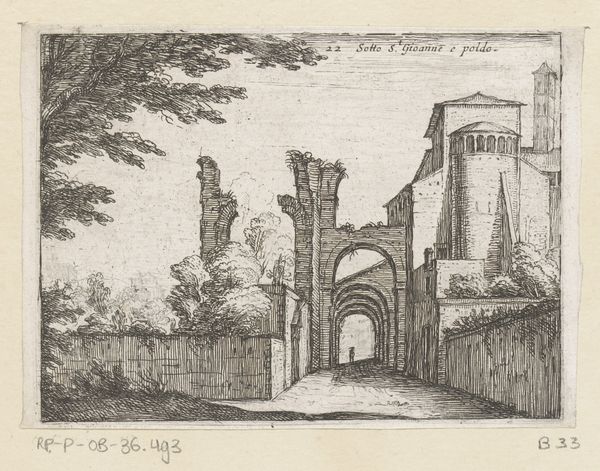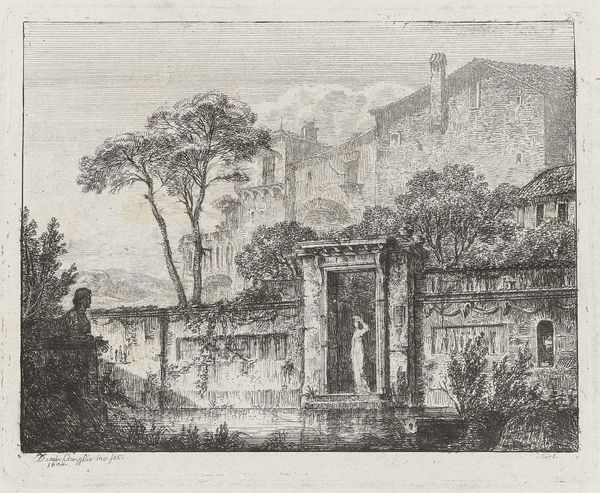
print, etching, architecture
#
baroque
# print
#
etching
#
landscape
#
cityscape
#
history-painting
#
italian-renaissance
#
architecture
Dimensions: height 94 mm, width 128 mm
Copyright: Rijks Museum: Open Domain
Curator: Today, we’re looking at "Ruïnes van antiek bouwwerk en het Colosseum te Rome," an etching by Giovanni Battista Mercati, dating back to 1629. Editor: My first impression is a melancholy one. There's something powerfully desolate about seeing these crumbling ruins depicted with such precise lines. Curator: Indeed, Mercati captures a distinct mood. This cityscape speaks volumes about the passage of time and the fate of empires. Notice how he positions the Colosseum in the background, almost like a ghost of its former self. Its presence is less about celebrating Roman grandeur and more about underscoring loss. Editor: I'm also struck by the starkness of the etching technique. The precise, deliberate lines serve to document the physical degradation of the materials – the brick, the stone, all rendered with incredible detail. Look at the shadows—they emphasize the rough texture, the brokenness. It really draws attention to the raw materiality of these ruins. Curator: The image invites reflections on the Baroque fascination with vanitas—the transience of earthly life. The crumbling architecture isn’t just stone and mortar, but a symbol of decay, a memento mori. Each crack and fissure serves as a reminder of human mortality and the inevitable decline of even the greatest civilizations. Editor: It’s intriguing to think about the socio-economic context of the print itself. Who was consuming these images? Was it a commentary on the instability of the Roman Catholic church or the ravages of time and wars? I mean, etching wasn't some quick and casual thing. These prints became objects in a larger market, carrying their own weight of artistic skill, labor and consumption. Curator: It certainly wasn’t mere documentation. Mercati selected and arranged these ruins, crafting a narrative about memory and cultural identity. He evokes not just the historical reality but the psychological weight these structures carried for his contemporaries, constantly aware of their place in history. Editor: The material rendering really lends itself to that. The fine lines make decay itself become a thing of beauty – which almost softens the memento mori aspect. We’re contemplating an artwork showing decay. Curator: A fascinating layering of concepts and techniques then. Editor: Exactly! A really powerful piece when we look at the making of meaning within art’s materials.
Comments
No comments
Be the first to comment and join the conversation on the ultimate creative platform.
